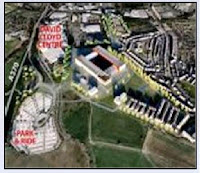 I'm very pleased to have received the email below today showing that two of the 22 proposals I submitted to Bristol City Council's Sustainable Communities Act process have been successful, passing the various tests (see the proposals described after the email). It will be very interesting to see what the Local Govt Association make of them.
I'm very pleased to have received the email below today showing that two of the 22 proposals I submitted to Bristol City Council's Sustainable Communities Act process have been successful, passing the various tests (see the proposals described after the email). It will be very interesting to see what the Local Govt Association make of them.Dear Ms White and Mr Vowles,
I'm writing to let you know that following decision at the Council's Cabinet meeting last night. I am pleased to say your joint proposal regarding reducing commercial and industrial waste and the seprate one submitted by you individally Mr Vowles on statutory biodiversity/ecofootprint data in planning applications have been submitted to the Local Government Association Selector Panel today.
We would like to thank you for your input to this process so far and will let you know as soon as we have further information from the LGA on the progress of these and other proposals the Council has submitted.
Kind regards,
Deborah
Deborah Kinghorn
Policy Officer
Deputy Chief Executive's Unit
Bristol City Council
0117 92 22792
Policy Officer
Deputy Chief Executive's Unit
Bristol City Council
0117 92 22792
1.The proposal is to establish statutory biodiversity/eco footprint data in planning applications.
Submission of ‘before and after’ biodiversity and eco-footprint data to be a compulsory part of all planning applications – the data to be a statutory consideration for all planning committees.
The proposal would improve the eco-footprint of new development. In theory it should lead to an increase in resource supporting biodiversity, reduce the contribution new development has on climate change, might boost the local economy through local supply, improve the resource efficiency of the development.
People submitting planning applications for new development would need guidance on how to undertake this and what would be required. Therefore Officers and Members of the Council would also need training and guidance in order to implement this proposal successfully.
It would require a change in legislation to become mandatory.
2.Reduce commercial and industrial waste.
Give local authorities the responsibility for managing all commercial and industrial waste to ensure that the principles of reduce, reuse and recycle can be applied to commercial and industrial waste as well as municipal waste.
If local authorities are given this responsibility, establish a national indicator for waste minimisation that covers commercial and municipal sectors.
Municipal waste only accounts for 15% waste and Commercial and Industrial accounts for 39% with construction and demolition 46%. (WEP Joint waste strategy paper)
There is currently little influence on the commercial and industrial sector to minimise waste through the three Rs , reduce, reuse, and recycle. The main influence is the financial cost which is not prohibitive enough to encourage minimisation of waste to landfill.
If local authorities are responsible for the whole waste stream, it will enable waste to be tackled in a more joined up way and with more regard for the environment. Commercial and Industrial waste tends to have fewer waste streams and can often be easily recycled.








